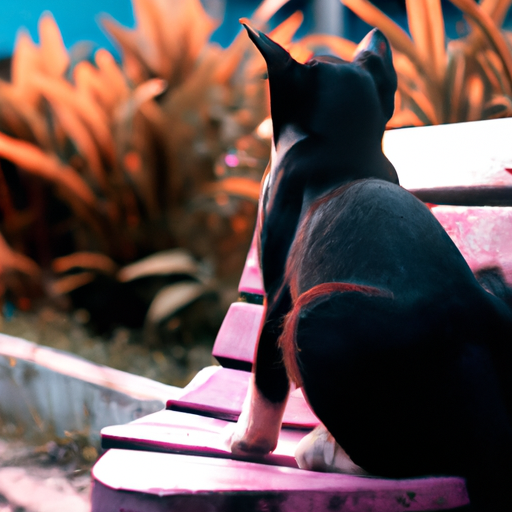Indoor Vs. Outdoor Cats: Weighing The Pros And Cons
When it comes to cats, one crucial decision that many pet owners face is whether to keep their feline companion indoors or allow them to roam freely outdoors. While each option has its own set of advantages and disadvantages, it’s essential to consider the pros and cons to ensure the well-being and safety of your beloved pet. So, let’s take a closer look at the indoor vs. outdoor cats debate and find the best fit for you and your furry friend.

This image is property of images.pexels.com.
Click here to Understand & Speak With Your Cat!
Pros of Indoor Cats
Reduced risk of injury
One of the main advantages of keeping your cat indoors is the reduced risk of injury. When your cat is inside, they are protected from hazards such as traffic accidents, encounters with aggressive animals, and fights with other cats. By keeping your furry friend indoors, you can ensure their safety and minimize the chances of them getting hurt.
Protection from predators
Indoor cats are also shielded from the dangers posed by predators. Whether it’s a neighborhood dog or a larger wild animal, such as a coyote or fox, your indoor cat will be safe from potential attacks. This sense of security can provide you with peace of mind, knowing that your beloved feline is protected within the walls of your home.
Less exposure to diseases
Another advantage of keeping your cat indoors is the reduced exposure to diseases. Outdoor cats can come into contact with various illnesses, such as feline leukemia virus (FeLV), feline immunodeficiency virus (FIV), and respiratory infections. By keeping your cat indoors, you can minimize the risk of them contracting these potentially life-threatening diseases.
Longer lifespan
Indoor cats tend to live longer lives compared to their outdoor counterparts. With reduced exposure to dangers, such as accidents, predators, and diseases, indoor cats are generally healthier and have a better chance of reaching old age. By providing a safe and secure environment, you can significantly contribute to your cat’s longevity and ensure they have many happy years by your side.
Lower likelihood of getting lost or stolen
Keeping your cat indoors greatly decreases the chances of them getting lost or stolen. Indoor cats are less likely to wander off and become disoriented, increasing the chances of a safe return if they do happen to escape. Moreover, by preventing your cat from roaming freely outdoors, you also reduce the risk of them being stolen or taken in by someone else.
Cons of Indoor Cats
Lack of exercise and stimulation
One drawback of keeping your cat indoors is the potential for a lack of exercise and stimulation. Without access to outdoor spaces, indoor cats may have limited opportunities for physical activity, leading to weight gain and a sedentary lifestyle. As a responsible cat owner, it’s crucial to provide alternative means of exercise and mental stimulation to keep your indoor cat happy and healthy.
Potential for obesity
Due to the reduced exercise mentioned earlier, indoor cats have a higher risk of becoming overweight or obese. Lack of movement can lead to a slower metabolism, and if their diet is not properly monitored, it can result in weight gain. It’s important to create a balanced feeding routine, provide engaging toys, and encourage playtime to prevent obesity and promote a healthy weight for your indoor cat.
Increased risk of certain health issues
Indoor cats may be more prone to certain health issues compared to their outdoor counterparts. For instance, they may be more susceptible to urinary tract problems, dental issues, and obesity-related conditions. Regular veterinary check-ups and a proper diet are essential to ensure your indoor cat stays in optimal health and to identify any potential health problems early on.
Boredom and behavioral problems
Without the stimulation provided by the great outdoors, indoor cats may experience boredom and develop behavioral problems. They may resort to destructive behaviors, such as scratching furniture or excessive meowing, as a way to alleviate their boredom. Providing interactive toys, scratching posts, and spending quality time with your indoor cat can help combat boredom and promote positive behavior.
Limited natural experiences
Indoor cats miss out on the natural experiences that outdoor cats enjoy. They don’t get to climb trees, chase birds, or feel the grass beneath their paws. While they are safe and protected indoors, it’s important to find ways to bring the outdoors in. Creating a cat-friendly environment with access to fresh air, sunlight, and stimulating toys can help emulate some of the natural experiences your indoor cat may be missing out on.

This image is property of images.pexels.com.
Click here to Understand & Speak With Your Cat!
Pros of Outdoor Cats
Room to roam and explore
Outdoor cats have the freedom to roam and explore their surroundings. They can enjoy the sights, sounds, and smells of the outdoors, satisfying their natural curiosity. This exploration can provide them with mental stimulation and keep them entertained throughout the day.
Increased exercise and mental stimulation
Outdoor cats naturally get more exercise and mental stimulation compared to their indoor counterparts. They have the opportunity to run, climb trees, and engage in a variety of activities that can help keep them physically and mentally fit. The outdoor environment offers endless possibilities for exploration and play.
Opportunity to exhibit natural behaviors
Outdoor cats have the chance to exhibit their natural behaviors, such as hunting and stalking prey. These activities fulfill their natural instincts and provide them with a sense of fulfillment. Being able to engage in these behaviors can contribute to their overall well-being and happiness.
Enhanced socialization with other cats
Outdoor cats have more opportunities to socialize with other cats in the neighborhood. They can establish territories, communicate with other felines, and engage in social interactions that are crucial for their social development. This socialization can help prevent behavioral problems and contribute to their overall mental health.
Sense of freedom and independence
Outdoor cats experience a sense of freedom and independence that indoor cats may not fully enjoy. They can come and go as they please, explore new territories, and make their own decisions. This freedom can provide them with a sense of fulfillment and satisfaction.
Cons of Outdoor Cats
Greater risk of injury or death
One of the biggest concerns for outdoor cats is the increased risk of injury or death. They are exposed to various dangers, including traffic accidents, fights with other animals, and falls from heights. The unpredictability of the outdoors means that outdoor cats face greater risks when compared to their indoor counterparts.
Exposure to predators and toxins
Outdoor cats are susceptible to encounters with predators, such as wild animals, larger dogs, and even abusive humans. They may also come into contact with toxic substances, such as pesticides or plants that are harmful if ingested. These risks pose a significant threat to the safety and well-being of outdoor cats.
Higher likelihood of contracting diseases
Outdoor cats have a higher likelihood of contracting diseases due to their exposure to other animals and their environments. They may come into contact with infected animals, parasites, or contaminated water sources, increasing their risk of contracting various illnesses. Regular veterinary check-ups and vaccinations are essential for maintaining the health of outdoor cats.
Shorter lifespan
Due to the increased risks and exposure to various hazards, outdoor cats tend to have shorter lifespans compared to indoor cats. While each cat’s lifespan can vary depending on numerous factors, the average lifespan of an outdoor cat is generally shorter. This highlights the importance of considering the potential trade-offs when deciding whether to allow your cat to roam outdoors.
Potential impact on wildlife population
Outdoor cats can have a significant impact on the local wildlife population. They may hunt and kill birds, small mammals, or reptiles, disrupting the local ecosystem. This can have negative consequences for both the wildlife population and the balance of nature in your area. Responsible pet ownership includes considering the potential ecological impact of allowing your cat to roam freely outdoors.

This image is property of images.pexels.com.
Click here to Understand & Speak With Your Cat!
Training and Harnessing
Options for training indoor cats
If you’ve decided to keep your cat indoors but want to provide them with some outdoor experiences, there are options for training them to walk on a leash and harness. With patience and positive reinforcement, many cats can be taught to walk outside safely. Start by introducing them to the harness gradually, allowing them to acclimate to the sensation before attempting outdoor walks.
Introducing cats to harnesses
Introducing cats to harnesses requires patience and a gradual approach. Start by allowing your cat to explore and sniff the harness before attempting to put it on. Use treats and praise to create positive associations and gradually increase the amount of time your cat wears the harness. Once your cat is comfortable, you can begin practicing short walks in a safe and controlled outdoor area.
Taking precautions for outdoor exploration
When taking your cat outdoors on a harness, it’s important to take necessary precautions to ensure their safety. Choose a secure and quiet area for their first outdoor adventures, away from busy roads or areas with potential hazards. Supervise them at all times and be mindful of their comfort level and behavior. It’s also crucial to protect them from fleas, ticks, and other parasites by using appropriate preventative measures recommended by your veterinarian.
Outdoor Enclosures and Catios
Benefits of outdoor enclosures and catios
Outdoor enclosures and catios offer a compromise between allowing your cat to experience the outdoors while keeping them safe. These enclosed spaces provide your cat with access to fresh air, sunlight, and a more natural environment without exposing them to the risks associated with roaming freely. They can be customized with features such as climbing structures, resting areas, and scratching posts to provide a stimulating and safe outdoor experience for your cat.
Considerations for building or buying
When considering an outdoor enclosure or catio, there are several factors to keep in mind. Consider the size and design of the enclosure, ensuring it provides enough space for your cat to move around comfortably. It’s also essential to evaluate the materials used, making sure they are sturdy, weather-resistant, and safe for your cat. Whether you choose to build or buy an enclosure, prioritize your cat’s safety and well-being.
Methods to ensure safety and security
To ensure the safety and security of an outdoor enclosure or catio, there are several measures you can take. Start by inspecting the enclosure regularly for any potential escape routes or weak spots. Ensure all doors and windows, including those leading to the house, are secure and cat-proof. Additionally, provide a shaded area, fresh water, and protection from extreme weather conditions to keep your cat comfortable and safe.

Click here to Understand & Speak With Your Cat!
Environmental Enrichment for Indoor Cats
Providing interactive toys and puzzles
To combat the lack of exercise and boredom that indoor cats may face, providing interactive toys and puzzles can be highly beneficial. These toys engage your cat’s instincts, encourage physical activity, and keep them mentally stimulated. Whether it’s a treat-dispensing toy, a puzzle feeder, or a catnip-filled interactive toy, there are numerous options available to keep your indoor cat entertained and engaged.
Creating vertical spaces for climbing
Cats have a natural instinct to climb and perch, so creating vertical spaces indoors can satisfy this innate behavior. Install cat trees, shelves, or window perches to provide your indoor cat with elevated spaces to explore and observe their surroundings. These vertical spaces offer exercise opportunities and a change of perspective, promoting physical and mental well-being.
Setting up scratching posts and perches
Indoor cats need appropriate outlets for their scratching behavior to prevent them from damaging furniture or other household items. Provide sturdy scratching posts or boards in different areas of your home to encourage your cat to scratch in a designated area. Additionally, offering comfortable perches near windows or in sunny spots can allow your cat to enjoy a cozy, elevated view of the outside world.
Indoor Cats and Health
Regular veterinary check-ups
Regular veterinary check-ups are essential for maintaining the health of indoor cats. Schedule annual examinations to monitor their overall well-being, dental health, and to stay up-to-date on vaccinations and parasite prevention. Routine check-ups can help identify any potential health issues early on and ensure that your indoor cat receives the necessary medical care to lead a healthy and happy life.
Balanced diet and portion control
Indoor cats have a tendency to be less active compared to outdoor cats, making it important to monitor their diet and prevent overeating. Consult with your veterinarian to determine the appropriate portion sizes and choose a high-quality, balanced cat food suitable for your cat’s age and health needs. Maintaining a healthy weight through proper diet and portion control can help prevent obesity and related health issues.
Monitoring weight and activity level
Keeping track of your indoor cat’s weight and activity level is crucial for their overall health and wellness. Regularly weigh your cat to ensure they are maintaining a healthy weight and adjust their diet and exercise routine accordingly. Encourage daily interactive play sessions to keep them physically active and mentally stimulated. By actively monitoring weight and activity levels, you can prevent obesity and promote a long and healthy life for your indoor cat.

Click here to Understand & Speak With Your Cat!
Supervising Outdoor Cats
Accompanying cats during outdoor time
If you choose to allow your cat outdoor time, it’s vital to supervise them to ensure their safety. Accompanying your cat during outdoor excursions allows you to observe their behavior, prevent potential dangers, and respond to any signs of distress or discomfort. Being present also provides an opportunity for bonding with your cat and enjoying mutual outdoor experiences.
Establishing boundaries and safe zones
When supervising outdoor cats, it’s important to establish boundaries and safe zones. Create an outdoor space that is enclosed, secure, and free from potential hazards. Use fencing, netting, or other barriers to prevent your cat from wandering into areas that may pose risks, such as busy roads or toxic plants. This way, you can allow your cat to explore while still keeping them safe.
Monitoring for signs of distress or danger
While your cat enjoys their outdoor adventures, it is crucial to monitor them for any signs of distress or danger. Look out for behavior changes, unusual vocalizations, signs of injury, or exposure to potential toxins. Being attentive to your cat’s well-being allows you to act quickly in case of an emergency or remove them from any potentially harmful situations.
Choosing the Right Option for Your Cat
Considering your cat’s personality and needs
Choosing between an indoor or outdoor lifestyle for your cat should be based on their individual personality and needs. Some cats may thrive indoors, enjoying the safety and comforts provided, while others may yearn for the freedom and exploration that the outdoors offer. Assess your cat’s temperament, energy levels, and health considerations to determine the best option for their overall well-being.
Factors to assess before deciding
When making a decision, there are several factors to consider. Evaluate the potential risks and benefits of each option, as well as your living environment, such as proximity to busy roads or wildlife habitats. Additionally, consider the time and resources you can dedicate to providing appropriate environmental enrichment for your cat, regardless of whether they are indoors or outdoors.
The possibility of compromise
If you find yourself torn between the two options, it’s possible to find a compromise that suits both you and your cat. Outdoor enclosures or catios offer a way to give your cat access to the outdoors while keeping them safe. Additionally, training your cat to walk on a leash or harness can provide them with supervised outdoor experiences. Explore the options available and find the balance that works best for your cat’s safety, well-being, and happiness.









